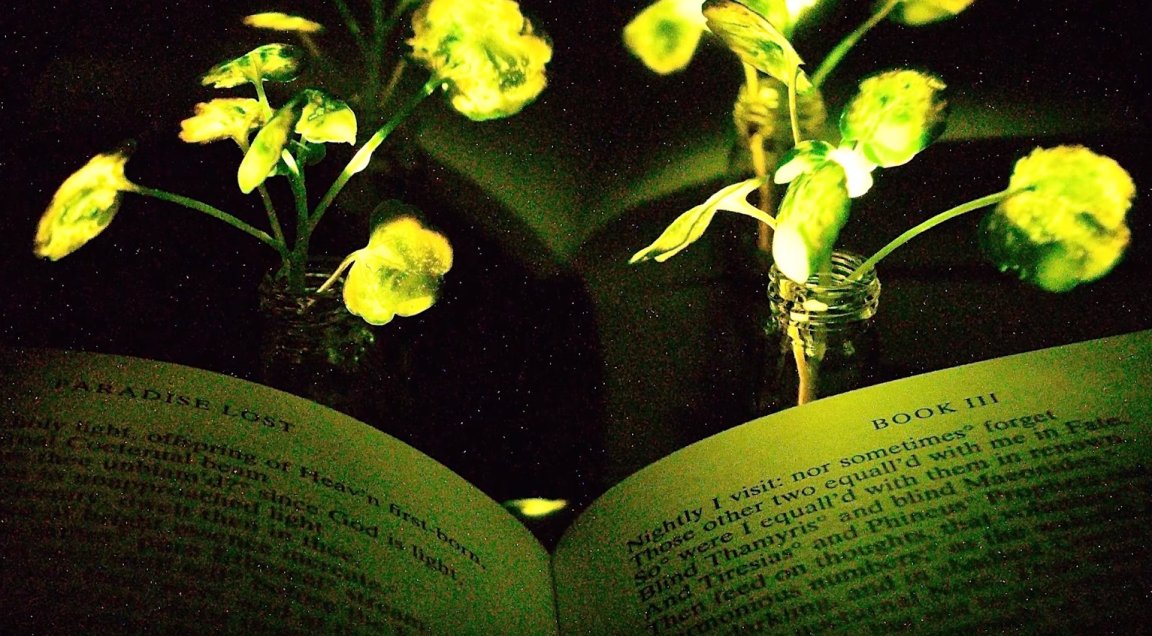
Glowing Plants
What if, as the sun went down, the unassuming plants in your windowsill began to glow, lighting up the space around them like tiny botanical lamps? Thanks to recent innovations by engineers at MIT, these living lamps could soon become a reality.
The team of researchers embedded specially designed nanoparticles into the leaves of a watercress plant, lead by Michael Strano, the Carbon P. Dubbs Professor of Chemical Engineering at MIT, and MIT postdoc Seon-Yeong Kwak — senior and lead authors on the study, respectively. The introduction of the nanoparticles caused the plants to give off a dim light, glowing for almost four full hours.
While this might seem like a relatively minor accomplishment (and one not immediately capable of translating into commercial use) the team believes that, with further exploration of their technique, they could increase the brightness of the glowing plants, as well as the length of time they’re illuminated.
According to Strano, “The vision is to make a plant that will function as a desk lamp — a lamp that you don’t have to plug in. The light is ultimately powered by the energy metabolism of the plant itself.”
Plant Nanobionics
The researchers hope this technology could extend beyond simple plant-based desk lamps. If they are able to scale and improve the technology, they suggest that it may be possible in the future to turn trees into self-powered street lights.
The project is part of a new research sector pioneered by Strano’s lab: plant nanobionics, which looks to use nanoparticles to give plants unique and naturally un-plantlike features and abilities. “Plants can self-repair, they have their own energy, and they are already adapted to the outdoor environment. We think this is an idea whose time has come. It’s a perfect problem for plant nanobionics.” Strano said.
While the idea of a self-powering plant lamp is still far off, the research definitely opens up the possibility. It could also contribute to other plant-based innovations, like explosive-detecting plants and those that can monitor droughts.